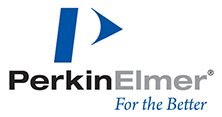Background
Humans can be exposed to heavy metals through a variety of means, including consumption of contaminated food. Although heavy metals are usually present in foods at very low levels, longterm exposure can have negative health impacts. Two of the more important toxic elements that must be monitored are cadmium (Cd) and lead (Pb), which can enter food either through environmental processes or through contamination in processing and/or packaging. As a result, it is very important to accurately measure low levels of Cd and Pb in a variety of food matrices.

A major challenge in the analysis of food samples is the extremely low analyte levels and the very high matrix levels. For many years, graphite furnace atomic absorption spectroscopy (GFAAS) has been a reliable technique and the preferred method for this analysis, especially for the determination of Cd and Pb. In the past few years, a number of instrumental developments have contributed to providing more reliable results and better detection limits for trace determination of lead and cadmium by GFAAS. These include improved electrodeless discharge (EDL) and hollow cathode (HCL) lamps for increased light output, and improved wet ashing sample preparation techniques (e.g., microwave digestion).






